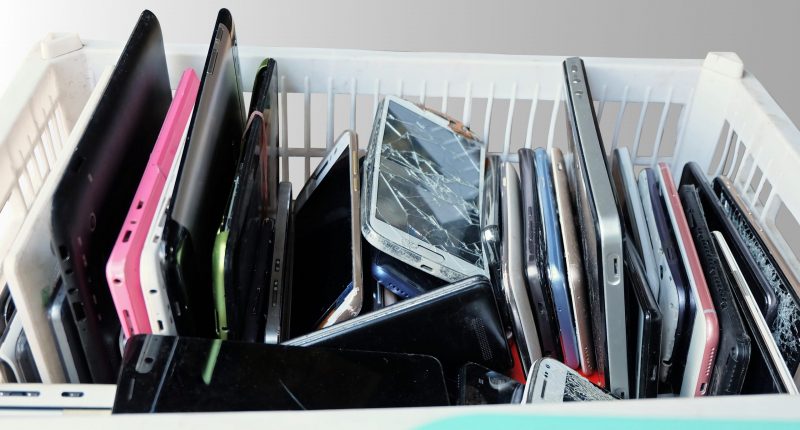Since the early noughties, two trends have coalesced in Australian society: a growing awareness of environmental issues – together with the attendant need to recycle – and the use of smartphones, laptops, iPads and other electronic devices. Connecting them is an issue which is being addressed by state and federal governments around the world, but which seems to have left Australia behind: the right to repair.
Actually, if we scroll back to three years ago, the then-Federal government appeared to be taking steps to make it easier for Australians to repair broken devices – from phones to washing machines – with the release of a report by the Productivity Commission in October 2021 which emphasised the importance of giving independent repairers ‘greater access to repair supplies, fostering competition for repair services, without compromising safety or discouraging innovation.’
In June 2021, the government passed our first Right to Repair legislation targeting the automotive market, establishing a mandatory scheme for the sharing of motor vehicle service and repair information for independent mechanics to get access to the diagnostic data and information needed to repair our cars.
Going from being ahead of the game, to behind the eight-ball
However, in the years since, the majority of the Commission’s recommendations have gone unanswered, even as the right to repair movement has grown, with Australia hosting an estimated 130 ‘repair cafes’, in addition to the many research centres and consumer organisations urging change on the issue.
Australia Research Council Future Fellow and Griffith University Professor of Intellectual Property Leanne Wiseman said Australia had gone from being a country that was leading on the issue, to one that was lagging behind – particularly in comparison to the United States and EU, where a spate of repair-friendly laws have recently been passed.
“The Australian Productivity Commission Report was released in October 2021, and at that time, Australia probably was leading in terms of having a whole-of-nation enquiry into barriers to repair across a whole range of sectors,” she said.
“Sixteen key recommendations covering the changes needed to consumer, competition, IP and environmental laws were handed to the Coalition government and of course we had change of government in early 2022.”
Professor Wiseman said so far only one recommendation – based on strengthening consumer law – had been picked up from the report, with the government introducing a designated complaints function in early 2024 which gives designated consumer and small business advocates the ability to submit a complaint to the ACCC about a significant or systemic market issue affecting Australian consumers or small businesses, such as unrepairable goods or lack of repair support.
More expansive protections needed
While this development offered an avenue through which customers could gain remedy for product complaints, Professor Wiseman said it was not enough, given present challenges consumer face when their products break and they can’t get them repaired.
“I think the problem that consumers face with our Australian consumer law is that you buy a product and you usually receive (at most) a two year manufacturer warranty, and if your product breaks after that time, you really have no option but to take the matter up under your consumer rights with the ACCC,” she said.
“It is increasingly common to spend $4000 on a fridge, and if something goes wrong with it after three years and your warranty only covered you for the first two. We have seen the concerns about manufacturers’ using the upselling of extended warranties when in reality the product should be supported for repair and service support for much longer. In the UK, manufacturers are required to support their products with spare parts, repair and service for between 7 and 10 years.
She added that the rest of the report’s recommendations – relating to changes needed in intellectual property laws and competition laws – had remained untouched by the current government.
“So unfortunately, we have had to watch the EU and the US progress with important policy and legislative reform which support and elevate repair,” she said.
“We’ve really fallen behind now, which is part of the reason repair advocates have been pushing this issue with all levels of government about the need for us to do something.”
The EU Parliament passed a “right to repair” directive in April 2024, which clarifies the obligations for manufacturers to repair goods and encourage consumers to extend a product’s lifecycle through repair. This includes requiring manufacturers to provide spare parts and tools at a reasonable price, as well as prohibiting them from obstructing repairs through the use of contractual clauses, hardware or software techniques.
More than thirty states in the US have had Right to Repair state laws introduced or considered covering a broad range of industries including car, agricultural machinery, medical devices and consumer electronics. Oregon has become the fourth state to enact Right to Repair rules for consumer electronics, including appliances, laptops and cell phones with laws already passed in California, New York and Minnesota. For example, the Californian Right to Repair Act requires manufacturers to support customers in identifying problems with and repairing electronic and appliance products, by offering documentation, parts, and tools to any owner, service and repair facilities, and service dealers on fair and reasonable terms.
Repairability labels: facilitating better purchase decisions
Professor Wiseman stated that one recommendation of the Productivity Commission that could easily be applied – and which reflects similar measures in Europe – was the labelling of products in a way that reflects their ability to be repaired.
“We know that in France and soon to be Europe, having a repairability label on electrical goods means that consumers are then educated about how that product has been designed, whether it’s able to be repaired or disassembled, whether there are spare parts or tools and information available,” she said. “It also is encouraging manufacturers to design better and to disclose more information about their products at the point of sale.”
“And manufacturers who are required to comply with these labels (and broader eco-design requirements) in those markets, should not be able to use the Australian market as a bit of a dumping ground for the same products that don’t comply”
Moreover, Australian consumers were already accustomed to seeing energy ratings on fridges and washing machines, so ‘repairability labels’ would simply be an extension of this, Professor Wiseman said, adding that in countries where a similar framework applied, products had become more competitive.
“In the UK they passed regulations around manufacturers having to provide spare parts for the goods that they put on to market for up to 10 years,” she said.
“After this law was introduced, a lot of brands had to leave the UK market because they couldn’t support their products, while other companies that did support their products throught repair, service and spare parts obviously remained in trade.
“Then don’t want to become a market where we get endless supplies of poorly designed, cheap appliances, for example like the $7 kettles, that we know there is no ability to repair as no spare parts are available or support from the manufacturers.””
Gaps in consumer law
Erin Turner – CEO of the Consumer Policy Research Centre, or CPRC – said that while it was possible to get things repaired in Australia, the current legal framework made things much too difficult.
“It’s far too hard to get a repair in Australia. Some companies even build a business model around encouraging you to purchase rather than get a repair,” she said.
Although Australia’s consumer law meant that customers ‘technically’ had the right to a repair, refund or replacement, Ms Turner added: “This legal protection is one of the very few that doesn’t have a penalty when business fails to follow through.”
“So if you have laptop and it breaks in two years and you should have expected it to last longer, you should be able to get a remedy: it could be a repair, a refund or a replacement,” she said.
“But if that company refuses to work with you, the worst that could happen is you could progress a complaint through the courts, go through quite a lengthy process, and in the end, the worst that that can happen to the company is that they’re told to repair it.
“There are no consequences for companies that repeatedly fail to fix a product. If we want our laws to work, and really have the right to repair, we need to penalise companies that don’t play by reasonable rules.”
The e-waste problem
One of the biggest reasons why Australia should follow the EU and US down the right to repair path is to mitigate the environmental impact of discarded electronic goods, or e-waste.
Professor Wiseman said that despite Australia’s long-term commitment and acceptance of recycling, this would not be enough to right the wrong done by people throwing faulty products away.
“Global e-waste is growing at five times the amount that the world can recycle: so we know that production and consumption of electronics and consumer appliances basically will never get recycled because there’s just far too many of them,” she said.
“If we could all use our phones or other goods for one year longer, the environmental savings would be phenomenal.”
So what’s this about ‘parts pairing’?
A few months ago, e-behemoth Apple announced it was changing its policy towards ‘parts pairing’: meaning that by the Australian springtime (or northern hemisphere’s autumn), there would be no more restrictions preventing repair shops from repurposing used parts.
Previously, Apple’s policy meant that if a customer wanted to shift an iPhone battery from one phone to another, they couldn’t do so without losing some features, because the company itself would need to authorise the change. Even with the recent policy change though, only elect models would see restrictions removed.
Professor Wiseman said the company had likely made these changes in response to the shifting mood towards the right to repair, particularly in legal terms.
“It is great to see movement from manufacturers like Apple around supporting more repair but we need to realise that a lot of this movement is because of threat of regulation down the line,” she said.
“And I think when manufacturers support self-repair, it should not still meant that you had to go back to that manufacturer to buy the spare parts. Part of the concern from a competition angle is that once you put a product on market, basically you shouldn’t be able to control who services and maintains that.
“That’s not maintaining fair and open competition in that market. It’s like agriculture machinery manufacturers saying that if farmers don’t have everything they need to fix their tractors, they just have to come back to us and get it.”
“That’s not the point of repairability: if you spend $800,000 on a tractor or a harvester, you should be able to swap out a spark plug or a filter yourself without having to go back to the manufacturer to get permission to do that as well.”
The example of challenges with agricultural machinery repair is particularly acute in Australia, she added, since most Australian farmers face not only harsh weather and climactic conditions but huge distances given some are so remote. Farmers can’t hold up their harvesting to wait hours or days for authorised dealers.
Supporting those who already support
In addition to the advocacy groups which have been pressing for legislative change – such as Clean Up Australia, the E-Waste Watch Institute, the Australian Automotive Aftermarket Association (AAAA) – there is also a groundswell of support for community repair with a network of Australian ‘repair cafes’ where customers can go to get repairs and much-needed information on products. These community-based repair activities are also playing an important role in raising awareness of our need to keep repair skills and knowledge in our communities as well as saving people money, reducing waste and helping the planet.
Ms Turner said their experience also highlighted the pressing need for action on this issue in Australia.
“The right to repair movement is amazing… they bring the issue to life,” she said.
“They see examples of a product that’s glued together instead of made properly, often made in a way that’s designed to fail, or which should be easy to repair but the company gets in the way.
“For example, by not providing care manuals or standard parts, only special parts, for example.
“These people see on the front line exactly how companies might use design or process to stop us reusing things.”
Professor Wiseman said that supporting repair cafes was also something that state and local governments could invest in, by providing venues and insurance.
“We have over 130 repair cafes in Australia, and while they’re never going to be the solution to the manufacturers’ overreach, they’re really doing a great job awareness-raising about the inability that we have to get simpler things like your toaster, your stick vacuum or coffee machine fixed,” she said.
“Because as soon as you speak to an electrician, it’s $150 for a call out fee.”








